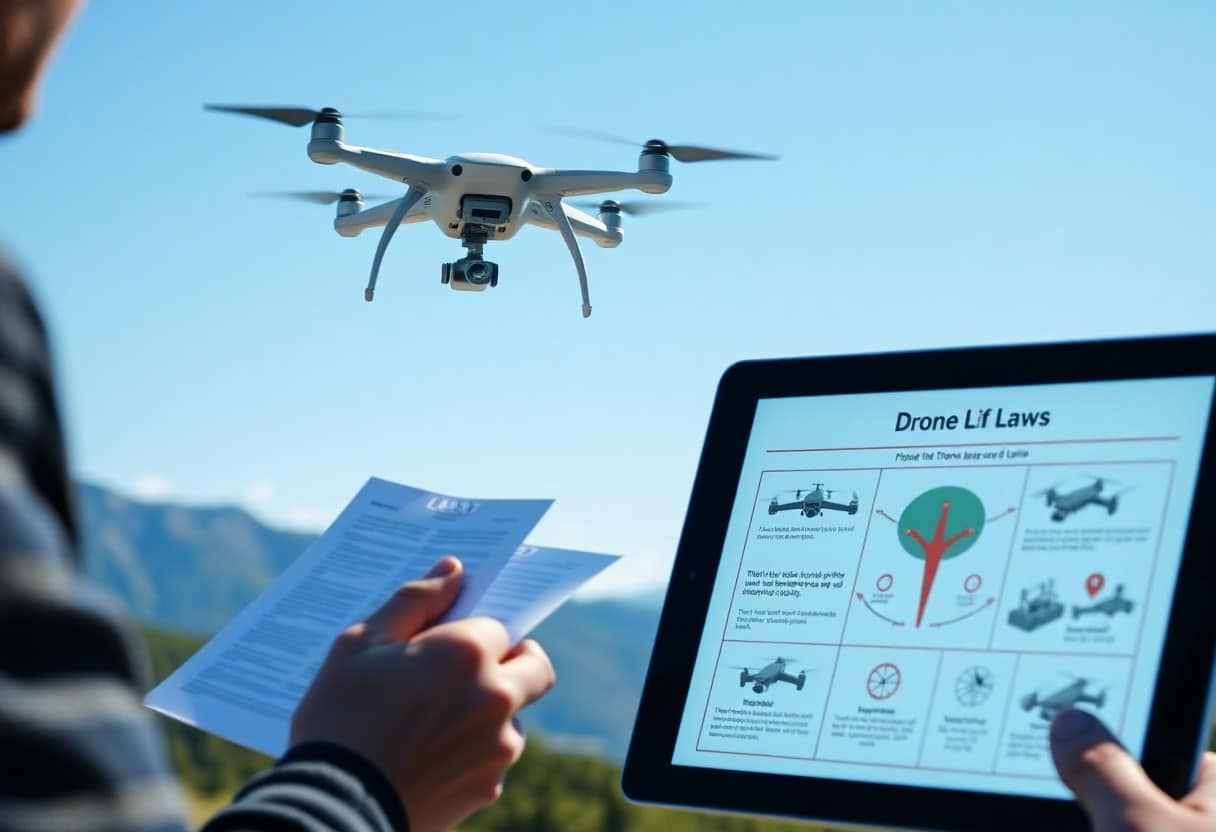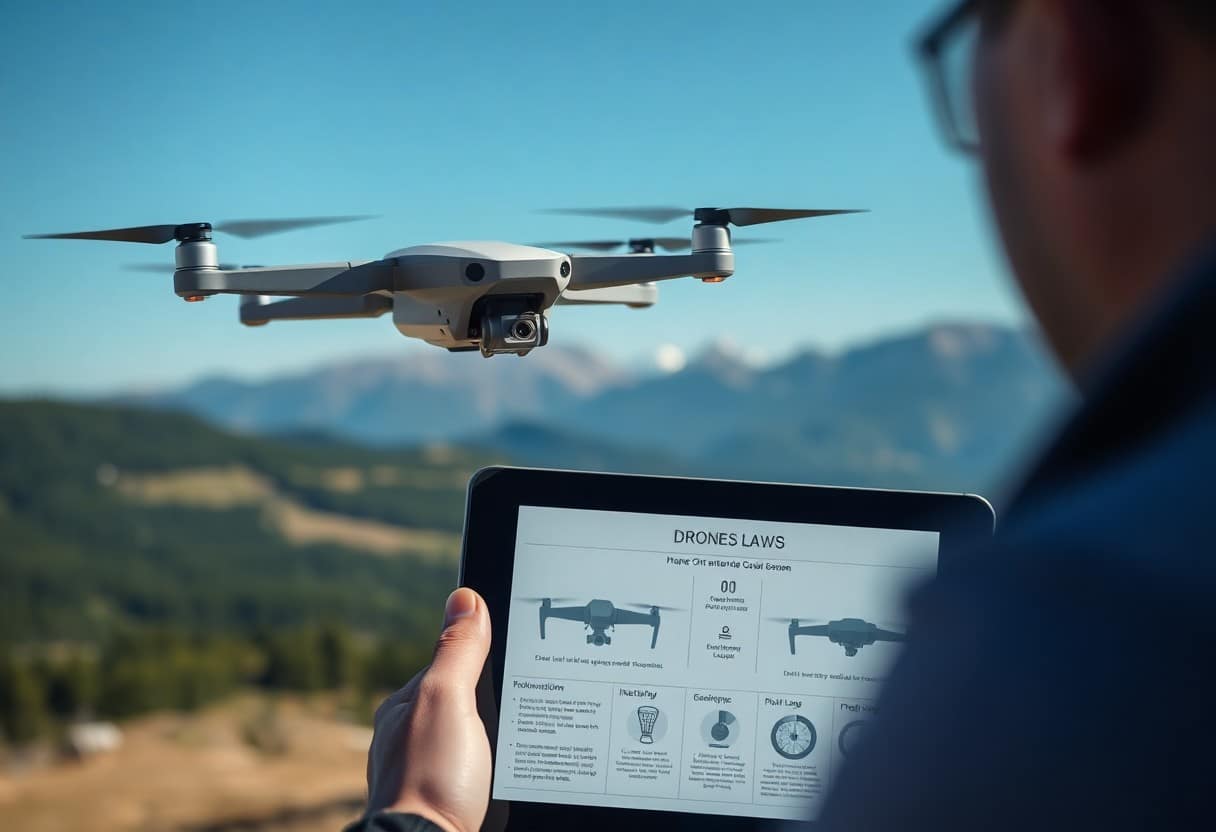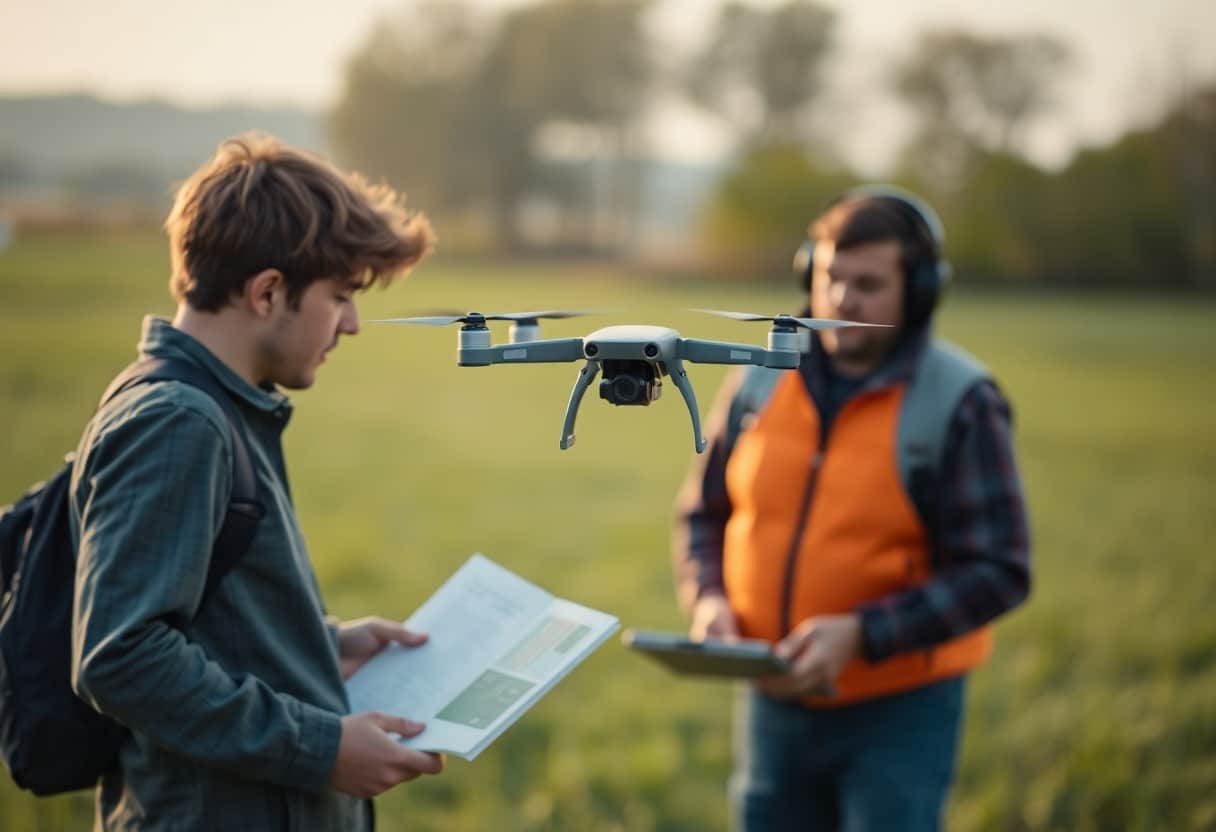Simplifying Drone Laws - 8 Steps to Legal and Responsible Drone Use
In today's era of rapid drone popularity, it's important to understandDrone LawsFor keepingLawful and Responsible UseThis article will guide you through the process. This post will guide you through theEight Simple StepsMake sure your drone operations are in compliance with the law and safety standards. From understanding local laws and regulations to obtaining the required permits, these steps will help you avoid serious legal consequences and give you peace of mind when it comes to enjoying your drone.

Summary of key points:
- Understanding the Law: Familiarize yourself with local drone laws and regulations to ensure legal operation.
- Registered Drones: To register the drone for legal status as required by law.
- Obtaining a License: Obtain relevant licenses and certifications to operate drones, if required.
- Follow the flight rules: Observe operating rules such as altitude limits, flight zones and times.
- Respect for privacy: Avoid flying over private property and respect the privacy of others.
- Safety Flight: Always ensure flight safety by avoiding congregations or hazardous areas.
- Insurance Considerations: Consider purchasing drone insurance to protect yourself and others.
Understanding Drone Regulations
Before using a drone (UAV), it's important to know the laws and regulations. This will not only protect you, but also keep others safe. By following the right laws, you can avoid potential legal issues and fines, making your UAV experience more enjoyable and responsible.
Overview of the National Drone Act
Laws and regulations for drones vary from country to country and often include flight altitude, airspace restrictions and registration requirements. You need to be aware of your country's drone laws and regulations and follow them to ensure that your flight is legal.
State and local law regulations
In addition to state statutes, there are manyState and Local Drone Regulations. These regulations may limit the time, place, and even type of drone you can use. It is important that you carefully study the specific regulations in your area to avoid violations and to ensure safe flight.
The content of state and local statutes typically covers manyspecial requirementFor example, it is prohibited to fly in designated public places or sensitive airspace, and you need to apply for a permit in advance for certain events. These regulations may vary depending on your city or state, soStaying on top of local drone policyis very important. Remember to check your local government's website for up-to-date regulations and guidelines to ensure that you are not breaking the law with your use.

Register your drone
Before you can use a drone, you must first register it. Under local law, drone registration is not only a legal obligation, but also part of ensuring your safety and the safety of others. Learn aboutBasic Guidelines for Drone UseIt is very important that you refer to theTransform Your Ideas - Steps to Effectively Use CAD Tools for Amazing Designsfor more information.
When and how to register
You need to register as soon as possible before using the drone. TypicallyIf your drone weighs more than 250 gramsIf you are a member of an organization, you will need to register. The registration process is relatively simple and can usually be done online.
Registration Requirements
The requirements for registering a drone include providing your personal data and drone information. You may also need to pay a registration fee, depending on local regulations. Registration is usually valid for three years.
When registering your drone, youSpecific personal information is requiredThe details of the drone must be filled in, such as name, address and e-mail. Also fill in the details of the drone, including the model and serial number. Also, make sure you are familiar with theLocal, State and National Aviation RulesCompliance helps protect you and others from potential legal problems. Compliance helps protect you and others from potential legal problems.
Maintaining Airspace Awareness
When operating a drone, it is important to remain aware of the airspace. You need to be aware of the flying activity around you at all times, not only for your own safety but also for the safety of others. Suggested readingsHow does using RAW format in drone photography benefit post-production?We are committed to ensuring that you follow all relevant regulations and are aware of the danger zones to avoid.
No Fly Zone and Restricted Area
Special attention should be paid to no-fly zones and restricted areas when operating the drone. These areas may be restricted due to air force bases, airports, nature preserves or special events. You must comply with these regulations when operating your drone to avoid legal consequences or potential danger to others.
Understanding air traffic control
Understanding Air Traffic Control (ATC) is critical to the safe operation of a drone. ATC is responsible for managing flight activity in the air and ensuring that safe distances are maintained between aircraft. Staying in contact with ATC when needed, especially in congested airspace, is critical to your safety and the safety of others. Remember, failure to follow ATC's instructions may result inSerious Safety Hazardsas well asLiabilityThe

Safety Protocols for Drone Operations
It is important to follow safety protocols when operating a drone to ensure the safety of yourself and others. Familiarize yourself with and refer toWhat local laws and regulations should you know to operate a drone safely?The relevant laws and guidelines help to increase the safety of your operations.
Pre-flight Checklist
Before taking off, you should make a detailed pre-flight checklist. Checking the drone's battery level, propeller condition, controller connections, and weather conditions are all critical factors in ensuring a safe flight.
Emergency Procedures
In the event of an emergency, you need to have clear procedures in place. This includes recognizing abnormal conditions, quickly locating a safe landing area, and immediately shutting down the drone if necessary. Ensuring that you are familiar with these procedures can effectively minimize possible risks.
For emergency procedures.Rapid Response It's the key. In the event of a problem, such as a loss of signal or low battery, you should immediately activate emergency procedures to avoid an accident. Being prepared can help you stay calm and make the right choices in a crisis, ensuring your safety and the safety of those around you. Remember.Understanding and practicing these procedures can provide you with additional protection!The
Respecting the Privacy Act
Respect when using dronesPrivacy LawIt's important. Whether you are flying on private property or in public space, make sure you are not violating anyone's privacy. Avoid legal disputes by knowing your local laws and obtaining the necessary permits before filming.
Understanding Privacy
Privacy generally refers to an individual's right to maintain his or her own life and activities without interference. You should be aware of how your behavior affects the privacy of others, especially when they may not be aware of it. For example, avoiding residential areas or private spaces when choosing flight paths can help you comply with the law and protect the rights of others.
Tips for Responsible Photography
There are a few things you should follow when shootingResponsible Photography Tipsto obey the law and respect others. These tips include: avoid filming in private places, make sure there is enough space above the ground, and ask for permission. If you need to film people, it's a good idea to get their permission beforehand. Specific recommendationsBelow:
- Know the law
- Obtaining a filming permit
- Attention to public privacy
These guidelines will help you operate your drone in a legal and responsible manner.
Preparing for a responsible photo shoot requires a certain amount of planning and guidelines. You should always be vigilant and make sure that the area you are filming does not interfere with the lives of others. Use technology, such as altitude and camera angles, to avoid violating your privacy. Remember, it is your duty to respect other people's space and rights, no matter what the circumstances.
- Setting the shooting height
- Avoidance of airspace over residential areas
- Maintaining transparency
A sense of responsibility enables you to make more informed choices in drone operations.
Insurance and Liability Considerations
When operating a drone, it is important to understandInsuranceandResponsibilityConsideration is an important step in ensuring that you use and protect yourself legally. First, you need to consider the different types of drone insurance available to you so that you can choose the most appropriate plan to protect you from potential accidents and liability.
Types of Drone Insurance
- Third Party Liability Insurance
- Equipment Insurance
- Flight Insurance
- Commercial Drone Insurance
- Personal Use Policy
Assuming that you have the right kind ofInsuranceIt will give you more confidence and can mitigate potential financial losses.
| Type of Insurance | Coverage |
| Third Party Liability Insurance | Loss or injury to third parties |
| Equipment Insurance | Damage or loss of unmanned machines and accessories |
| Flight Insurance | Accidents during flight |
| Commercial Drone Insurance | Specialized coverage for business purposes |
Understanding Liability Coverage
Liability coverage is an important part of insurance, and you need to make sure you have the right kind of coverage.Responsibility CoverageProtect yourself and others. Liability insurance protects you from high legal fees and damages in the event of an accident. Depending on the use of the drone and the area in which it is flown, you will need to choose the right insurance plan to comply with legal requirements.
Whether you are an amateur or a professionalDrone OperatorUnderstandingResponsibility CoverageThe details are essential. Your choice has a direct impact on your financial security in the event of an accident. Make sure you understand the limitations and conditions of each type of coverage so you canAvoiding Accidental LossesA significant amount of damage can be caused. With the right insurance, you'll feel more protected when you fly and can focus on keeping your flight safe.
Drone Laws Made Simple - 8 Steps to Legal and Responsible Drone Use
By following these eight steps, you can ensure that your drone use is legal and responsible. Understanding the legal requirements, completing the necessary registrations, and having the proper licenses and insurance are key. Additionally, being sensitive to your surroundings and adhering to social norms will help to enhance the safety and credibility of your drone operation. This not only protects you, but also contributes to the good image of the drone community.
Frequently Asked Questions
Q: What are the eight steps of Drone Law Simplification?
A: The eight steps of Drone Laws Made Simple are guidelines designed to help amateur and professional drone operators follow when using a drone legally and responsibly. These steps include obtaining the proper license, understanding the law, performing safety checks, developing a flight plan, and more.
Q: What kind of license do I need to operate a drone?
A: Most countries require drone operators to obtain specific operating permits. For example, in the United States, commercial drones weighing more than 0.55 pounds require an FAA Part 107 permit. Other countries have different regulations and it is advisable to check local laws.
Q: Why is it so important to comply with drone laws?
A: Compliance with drone laws is important because they are designed to ensure public safety, protect privacy, and prevent interference with air traffic. Failure to comply with the laws may result in fines, lawsuits, and seizure of the drone.
Q: How do I make sure my drone is safe to fly?
A: Several elements of safe drone flight include conducting a thorough pre-flight equipment check, understanding weather conditions, avoiding flying over crowds, keeping the drone out of no-fly zones, and adhering to maximum flight altitude restrictions.
Q: What are the restrictions on using drones in the city?
A: The use of UAVs in cities is usually more restricted, for example, they are not allowed to fly in busy city centers, near airports, or in other no-fly zones. In addition, many cities require drone operators to obtain additional permits and comply with specific local regulations.
Q: What etiquette should I follow when flying a drone?
A: Drone operators should follow some basic etiquette when flying, such as: avoid flying over other people's heads, notify people in the vicinity in advance if necessary, and respect other people's privacy by obtaining their consent when filming them.
Q: How can I learn more about drone laws and regulations?
A: You can learn more about drone laws and regulations by taking a legal flight course, reading information on relevant government websites, joining a drone community or forum, or checking regularly for updates on relevant laws. This will ensure that you always keep your knowledge current.




